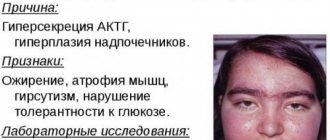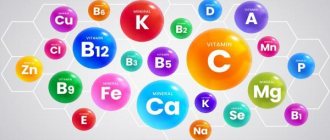About microstroke
“Micro-stroke, symptoms, first signs in women” is the topic of our article today.
Minor stroke, transient ischemic attack (TIA) , transient cerebrovascular accident - different names for the same vascular process - micro-stroke.
A microstroke is a local lesion of the blood vessels of the brain , has a number of similar symptoms to a large stroke, but its manifestations are not so pronounced, and the attack is characterized by “transience”, lasting from several minutes to a day.
Men and women can be equally exposed to transient ischemic attack , but due to the natural differences between male and female bodies, the course of the process will differ in the clinic.
Treatment of microstroke in women
Treatment in this case is aimed at preventing the development of a full-fledged stroke with serious impairment of brain functions in the future.
To treat a microstroke, therapy is selected that restores blood circulation to the brain. In particular, doctors use vasodilators and medications that improve metabolic processes in blood vessels.
Also, during treatment, doctors adjust the treatment of related diseases. If the patient suffers from hypertension, then cardiologists are involved in the work and prescribe effective antihypertensive drugs. Together with them, a treatment plan is developed by a gynecologist and an endocrinologist, who render a verdict on the woman’s further use of hormonal contraceptives and, if necessary, select a remedy suitable for each specific patient.
Differences between a microstroke and a stroke
A microstroke is a transient circulatory disorder in the cerebral vessels . It occurs against the background of constantly elevated blood pressure, its sharp rise, or atherosclerosis, when cholesterol plaques are deposited on the inner walls of blood vessels.
Important! Regularly measure your blood pressure with a tonometer, if you don’t have a tonometer, be sure to buy one, it’s not expensive, but every family should have it, here (on Aliexpress) you can always choose an inexpensive option.
The mechanisms of development of TIA and stroke are the same, they are similar in manifestations and symptoms:
- Bursting pain appears in the back of the head.
- You can clearly feel the blood pulsating in your temples.
- The sense of orientation disappears even in a familiar, familiar space.
- Limbs become numb and swollen. Swelling begins in the toes and feet, then swells in the fingers and forearms.
- Hyperhidrosis begins - increased sweat production throughout the body.
- The heart rhythm is lost.
- Both with a micro-stroke and with a large stroke, dizziness, fainting, and loss of consciousness are noted.
- In both the first and second cases, a change in vision is noted: “spots” or colored spots or circles appear before the eyes. At the very beginning of attacks, objects may look unnatural
- bright and clear, after a few minutes the colors fade, the surroundings are seen as if through a veil or fog.
- Loud sounds and bright colors begin to irritate.
- Paresis develops.
- Dysphagia develops - a violation of the swallowing reflex.
- Facial facial muscles are affected. And as a result, facial distortion occurs. A crooked, lopsided smile appears on the face, and the corners of the mouth droop.
Both during a stroke and during a transient ischemic attack, the whites of the eyes may turn red. In both cases, confusion and speech disturbances may occur, when it becomes slurred and difficult to understand.
Aksamon or Neuromidin, which is better, reviews
With all this, the processes differ in clinical picture:
- The symptoms of a microstroke are less pronounced.
- All manifestations of TIA disappear in a short period of time, the maximum duration of an attack is 24 hours, but usually it lasts no more than a few minutes.
- With a microstroke, a rapid heartbeat is observed, the skin of the face turns red; With a major stroke, the heart rate slows and the face turns pale. Facial pallor during a stroke is an alarming sign indicating a serious condition of the patient.
- With a microstroke, paresis develops - partial loss of motor activity; with a stroke, complete paralysis of the upper or lower extremities is possible.
- With a major stroke, large vessels supplying a given area of the brain are blocked or ruptured and, as a result, necrosis of the affected area and death of its nerve cells occurs. With a microstroke, small vessels are affected - capillaries and arterioles, the recovery of which occurs faster.
- In case of a microstroke, examination for the Babinski reflex will always give a negative result.
- With TIA, there is no enuresis; with a stroke, urinary incontinence is one of the constant symptoms.
- With a microstroke, gaze paresis does not develop, when friendly eye movement becomes impossible.
- With a microstroke, the pupils are the same size. With a stroke, anisocoria develops when one pupil is enlarged and the second is reduced in size.
This is the danger of a micro-stroke - in most cases it is endured “on your feet” , once, twice, three times, until an acute vascular catastrophe occurs, a major stroke. In case of a stroke, doctors have negligible time left to save the patient - only four and a half hours.
Symptoms of microstroke in women
A microstroke is periodically accompanied by nonspecific symptoms that indicate not only this disease. However, their appearance is a reason to immediately check your health.
Cerebral hypertensive crisis
During a crisis, blood pressure rises to high levels in an extremely short time. With such a significant difference, blood supply to parts of the brain is disrupted. A sharp jump is caused by various reasons, including excessive physical activity, abuse of bad habits, severe stress or overwork. In the event of a crisis, you should make an appointment for examination as soon as possible.
The main characteristic of a crisis is a sharp and significant increase in pressure in a very short time.
Suspicion of cerebral hypertensive crisis is diagnosed if the systolic (“upper”) pressure exceeds 180 mm Hg. Art., and diastolic (“lower”) overcomes the mark of 100-120 mm Hg. Art. Hypertensive patients easily ignore such a change, however, sudden changes in such a short period of time are not considered normal and are a good reason for going to a medical facility.
Transient ischemic attack
Transient ischemic attack (TIA) is a temporary acute disturbance of blood circulation in the brain. As a rule, it goes away within 24 hours. One of the most common symptoms of transient ischemic attack is visual disturbances. The patient temporarily suffers from the fact that he begins to see worse, stops seeing altogether, or loses this ability in one of the eyes. It is possible that vision loss is associated only with the upper or lower half of the visual field. Often, visual distortions last only a few seconds, but are repeated several times in one day.
Also, a transient ischemic attack affects the functioning of the vestibular apparatus. Some patients note unsteadiness of their own gait, dizziness, and instability.
Occasionally, TIA causes amnesia due to loss of short-term memory. In this case, memories of the past are retained, but the last few minutes or hours are completely lost from memory. As a rule, information about these events is returned within 24 hours.
Acute hypertensive encephalopathy
Hypertensive encephalopathy is a pathology that is a complication of hypertension. Its clinical picture develops in just a few hours.
First of all, a person is bothered by a bursting headache of varying severity. It is accompanied by nausea, vomiting and possible loss of consciousness. Some note visual disturbances: blurred vision and spots before the eyes.
In a particularly severe form, acute hypertensive encephalopathy turns into convulsions and leads to coma.
Distinctive features of female and male microstroke
Despite the similarity of symptoms and clinical picture, there are a number of specific differences between a “female” microstroke and a “male” one :
| Microstroke in women | Microstroke in men |
| The changes affect the vessels located in the occipital part of the head. This disrupts blood flow to the occipital and temporal lobes, cerebellum, and brain stem. | The vessels located in the front of the head are affected |
| Emotions are not controlled; the transition from tears to aggression can take several minutes. Mental disorders are one of the signs of a “female” microstroke | Changes in mental state occur rarely; a man is able to control his psycho-emotional state. |
| The risk of developing cerebrovascular accident is higher if a woman: · had an abortion or miscarriage; · had complications during pregnancy | The risk of developing TIA in men has nothing to do with reproductive function |
| The recovery period takes longer, there is a high risk of relapse with more severe symptoms | Recovery is faster, consequences are less obvious |
Symptoms of a microstroke
Today, this disease is not very rare among people. Therefore, it is so important to know how a microstroke manifests itself. Symptoms of the disease include:
- Weakness in the limbs;
- A sharp headache that appears for no reason;
- Numbness of the face and limbs;
- Inability to control facial expressions;
- Impaired coordination of movements;
- The occurrence of vomiting;
- Speech and vision impairment;
- Unreasonable feeling of “goose bumps”, etc.
Timely detection of a mini-stroke increases the chances of a quick and complete recovery. It is important that no more than 6 hours pass from the first manifestations to the provision of assistance. In another case, a violation of cerebral circulation will lead to irreparable complications.
Early subtle signs of microstroke in women
Early neurological symptoms depend on which part of the brain is affected by the ischemic attack.
Terzhinan, cheaper analogues, suppositories, list of cheap Russian analogues, drug prices
So, if the blood vessels of the parietal lobe are affected, there is a decrease or complete loss of tactile sensitivity . It is impossible to determine the characteristics of an object with closed eyes, it is impossible to determine whether it is cold or warm, what kind of surface it has, smooth or rough; What shape is it - square, round, triangular.
When the occipital lobe is damaged, ophthalmological problems : vision decreases, it is impossible to visually identify even well-known objects.
The manifestations of a microstroke are surprising when the temporal lobe is affected. There are lapses in memory and a feeling of “déjà vu” - “recognition of the past,” a mental state when a person “remembers” a place, situation or event.
The following are considered as common and earliest manifestations of microstroke in women:
- Semi-fainting conditions, accompanied by constant dizziness and severe headaches.
- Nausea, retching, or vomiting directly.
- Redness of the face and whites of the eyes.
- Characteristic tingling in the limbs.
How to find out if a woman has had a mini-stroke
It is worth taking seriously such deterioration in health as:
- Strong headache;
- numbness in the limbs;
- speech difficulties;
- fainting;
- uncontrolled facial expressions;
- chills;
- heavy sweating;
- weakness;
- anxiety and uncomfortable sensations in the cardiac region;
- increase in blood pressure.
A distinctive feature of the disease is that the patient loses cognitive abilities (memory, thinking, imagination). There is a sudden loss of vision. The symptoms of a mini-stroke last no longer than a day, and they are similar to the signs of a stroke. The difference is that after the condition worsens, it feels like everything is returning to normal. To the question of how to find out whether a woman has had a microstroke, there is only one answer - if signs of the disease are detected, consult a doctor immediately. The peculiarity of the disease is that after a few days, without a hardware examination, it is very difficult to identify a diagnosis.
Noticeable signs of the disease
As the process develops, the symptoms and first signs of a microstroke in women become brighter. This is exactly the moment when a microstroke can be differentiated from other diseases:
- Facial expressions are disrupted. When trying to smile, one corner of the mouth remains motionless, the smile turns out to be “crooked.”
- The sense of orientation in space disappears.
- Memory lapses begin.
- Numbness in fingers or toes.
- Vision is partially lost. An object or image is not completely visually perceived; only its right or left side is visible. With a microstroke, one of the symptoms is photopsia. a phenomenon where “floaters”, colored spots, zigzags or circles appear before the eyes.
- Muscle tone sharply decreases, the body is subjected to a drop attack, when a person suddenly loses consciousness for no apparent reason.
- In some cases, Wallenberg-Zakharchenko syndrome is observed - loss of coordination on one side of the body, unsteadiness of gait, dragging of the legs, inability to maintain balance.
Symptoms and warning signs that should prompt you to see a doctor
Symptoms of microstroke in women quickly disappear; often the disease can be diagnosed only in a medical institution.
There are several “ifs”, the combination of which makes it necessary to see a doctor:
- If severe and persistent headaches begin.
- If you see black or colored circles, spots, lightning before your eyes.
- If your heart rate and pulse rate are abnormal.
- If the limbs lose sensation.
- If control over facial expressions is lost.
- If one eye is in normal condition, and the other is half-closed.
- If speech is impaired and it is impossible to pronounce a logically completed phrase.
- If coordination is impaired and movements become uncoordinated.
What happens if you ignore a microstroke?
Statistics say that in ten out of a thousand people, TIA leads to the development of a stroke within the next three months.
Five out of a thousand people are admitted to hospital during the course of a year with a diagnosed ischemic stroke.
Phosphogliv or Karsil, which is better? Doctors' opinion
Ten to twelve people out of a thousand will be struck within five years after the first micro-stroke.
Providing first aid for a microstroke
If it is impossible to quickly call a doctor, follow this algorithm:
- The patient is placed in bed, providing unhindered access to fresh air.
- They give you a tablet of Aspirin, Agrenox or, if they are intolerant, Clopidogrel.
- To improve blood flow and protect brain neurons, give Piracetam or Vinpocetine.
- Blood pressure is measured, and if its first number exceeds 200, it is slowly lowered. Furosemide or Captopril are used.
- In diabetes mellitus, glucose levels are reduced.
For micro-strokes, do not take popular painkillers containing caffeine (Citramon), as they increase blood pressure even more.
Check out the list of the best blood pressure pills.
Reasons for the development of the disease
The main cause of a microstroke is a spasm of small blood vessels that supply the brain. As a result of pinpoint hemorrhage, some cells simply die. After some time (about 6 hours), the damaged part of the brain begins to recover.
The development of transient ischemic attack is facilitated by various factors, which include:
- Cardiovascular problems;
- Hypertensive crisis;
- History of myocardial infarction;
- Atherosclerosis;
- Heredity;
- Overweight;
- Bad habits;
- Sharp fluctuations in blood glucose levels, etc.
The disease affects both men and women. Only among representatives of the fairer sex does micro-stroke occur more often under 40 years of age than among men. After 60 years, these indicators level out. But women have a harder time suffering from this disease.
Treatment (therapy) of microstroke
When treating a microstroke, the following is prescribed:
- Thrombolytics : drugs that kill blood clots, restore blood flow, dissolve blood clots. Indicated for micro-strokes and ischemic strokes. But their use in hemorrhagic stroke leads to the death of the patient.
- Anticoagulants : reduce blood clotting and prevent blood clots.
- Disaggregants : prevent blood cells from joining into a single clot.
- Diuretics : relieve swelling in brain tissue.
- Neuroprotectors : restorative therapy drugs that support brain cells and reduce the risk of relapse.
Treatment includes physical therapy classes, water treatments, massages, breathing exercises, and diet. An important factor in eliminating relapses and maintaining vascular activity is giving up alcohol and smoking and controlling weight.
What is a microstroke
A microstroke differs from a regular stroke only in the extent of damage to brain cells. This is the same disruption of blood supply as a result of blockage of capillaries or small vessels. A microstroke can also occur with severe spasm of a bunch of small arteries and vessels. The main difference from a regular stroke is that after a mini-stroke a person recovers faster. Even a few minutes may pass, after which the patient will feel well and continue to carry out daily activities.
The main danger of a micro-stroke is that it can go unnoticed. Or, when the attack does not produce significant consequences, the patient decides not to waste time visiting the clinic and leaves the attack unattended, while at the first manifestations of the problem it is necessary to urgently seek advice from a specialist.
With a mini-stroke, brain tissue is affected that does not receive blood supply as a result of blockage of small arteries by a thrombus, blood clot, or due to spasm. Tissue necrosis affects a small area, which is why the patient does not show signs typical of an ischemic attack:
- difficulty lifting limbs;
- slurred speech;
- dizziness;
- severe headache.
If these signs appear, they disappear on their own after a short time. It may take no more than a day, and all body functions are restored again.
Consequences of a mini-stroke
TIA does not go away without a trace. The symptoms will disappear, but the attack will happen again and again. In 300 people out of a thousand, TIA will lead to the development of a stroke - its most severe and most dangerous consequence.
There are two types of stroke development:
- Ischemic (the most common consequence of a microstroke), when blood flow to a certain area of the brain stops. It is the result of either a blood clot that has closed the vessel or prolonged vascular spasm.
- Hemorrhagic (rarely develops after TIA, considered only as a special case) - a severe brain catastrophe, the result of a breakthrough of large vessels and hemorrhage in the brain.
During a stroke, cells in large areas of the brain die, the patient develops paresis and plegia with complete or partial loss of sensitivity, the person ceases to adequately assess the situation, memory loss occurs, and in some cases, swallowing dysfunction occurs.
In addition to the risk of stroke, recurrent TIAs threaten:
- decline in intelligence;
- memory impairment;
- changes in mental state, lack of control over emotions and their frequent changes, when from tears to aggression, from irritability to apathy and depression - one step.
Today TIA is “getting younger.” Micro-strokes are diagnosed in women who have barely crossed the 30-year mark. Neither self-medication nor letting the disease “go on its own” is permissible, because the consequences can lead to irreversible changes.
Symptoms of a small stroke
- Numbness, sudden loss of sensation in any part of the body
- Speech difficulties
- Loss of coordination, difficulty walking
- Severe causeless headache
- Memory loss
- Hypersensitivity to sounds and bright light
Why is it important not to miss the moment?
A microstroke can be eliminated without consequences; it is called the “therapeutic window” and is no more than 4.5 hours. The most reliable option is to contact a specialized institution where stroke treatment is carried out and ultrasound of the vessels supplying the brain, MRI of the brain, cardiac studies and tests can be quickly performed to provide a comprehensive understanding of the risks of developing a major stroke.
Statistics show that 60 percent of patients who experience a microstroke experience a full-fledged hemorrhagic or ischemic stroke after some time. The next stage in treatment should be measures aimed at restoring stable blood supply to the brain. And work on the problems that led to the development of a small stroke.









